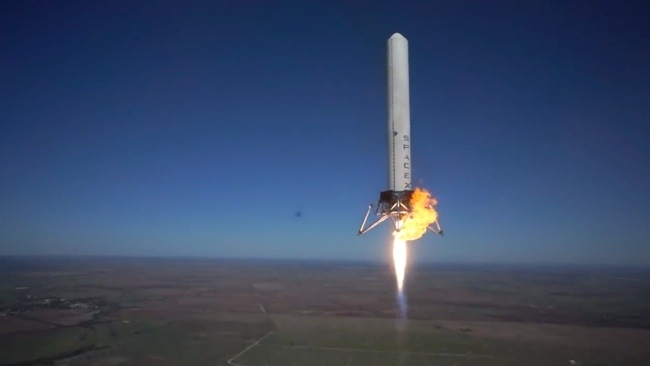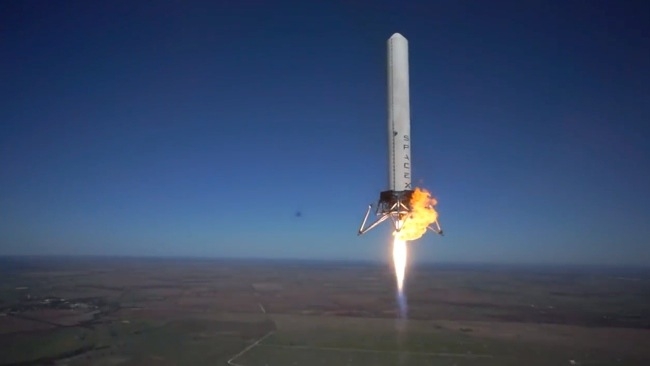
 SpaceX Grasshopper
SpaceX Grasshopper
Whoever's got their finger on this drone's joysticks has done an outstanding job!
We've already covered July's SpaceX Grasshopper launch, and we thought at the time that it was the most extraordinary rocket launch we'd ever seen. Not only is the rocket technology pretty brilliant - whatever else it is, it's not easy launching a rocket and landing it back on its pad with millimetre accuracy - but the video tech used to capture the launch is almost unbelievably clever.
That technology is, of course, a multi-rotor drone; essentially a remote control helicopter with a stabilised HD camera on board.
Essentially the same set-up was used for the second launch on October 7th, but the flight reached an altitude of 2,440 feet (higher than the drone) this time. And the footage is even better.
Note how the drone operator tilted the camera upwards slightly early to track the vertical movement of the rocket. Probably a good idea, in hindsight, because it meant that there was enough vertical headroom to keep the rocket in view with a margin for error. Towards the top of the flight, the rocket hit the upper edge of the frame, but was quickly back in sight. At this stage you would see one of the drone's rotors, which looked as though it was wobbling all over the place - a testament to the way the camera itself was stabilised: the entire shot looked rock-steady.
Moon landings
This isn't the first or even second time that a rocket launch has been viewed remotely. The first time it happened, on live TV, was with the Apollo moon landings. The astronauts on the later trips were able to set up a camera on the Moon's surface looking back at the Apollo lander. As the Ascent stage blasted off to reunite the crew with their command module, still in orbit, a camera operator on Earth remotely controlled the camera so that it would follow the craft on its ascent.
That would have been easier if it weren't for the 1.5 second lag between sending a command from Earth its being received at the lunar base. 1.5 seconds doesn't sound much but imagine that kind of lag between your steering wheel and your tires.
The camera operator had obviously thought this through, though, because exactly as the Ascent stage lifted off, the camera zoomed out for a second and then started to move vertically and succeeded in tracking the craft until it was a pin-prick.
Whoever controlled that camera was a hero!
See the Moon take-off after the break
Moon take-off
And here's the spectacular previous launch
Tags: Technology



Comments